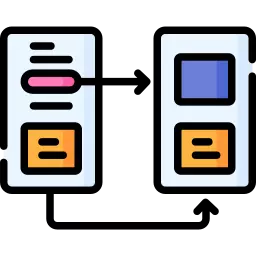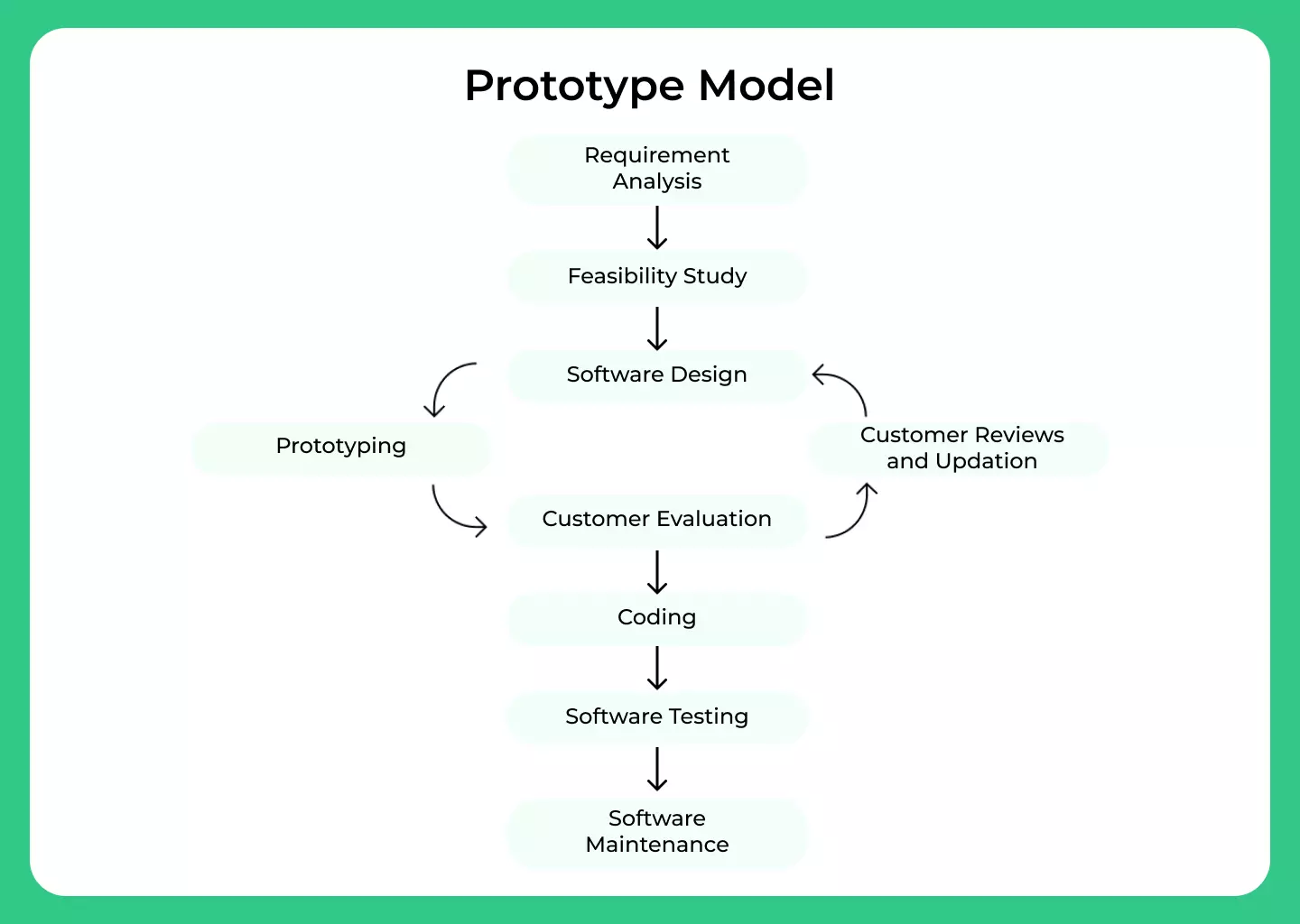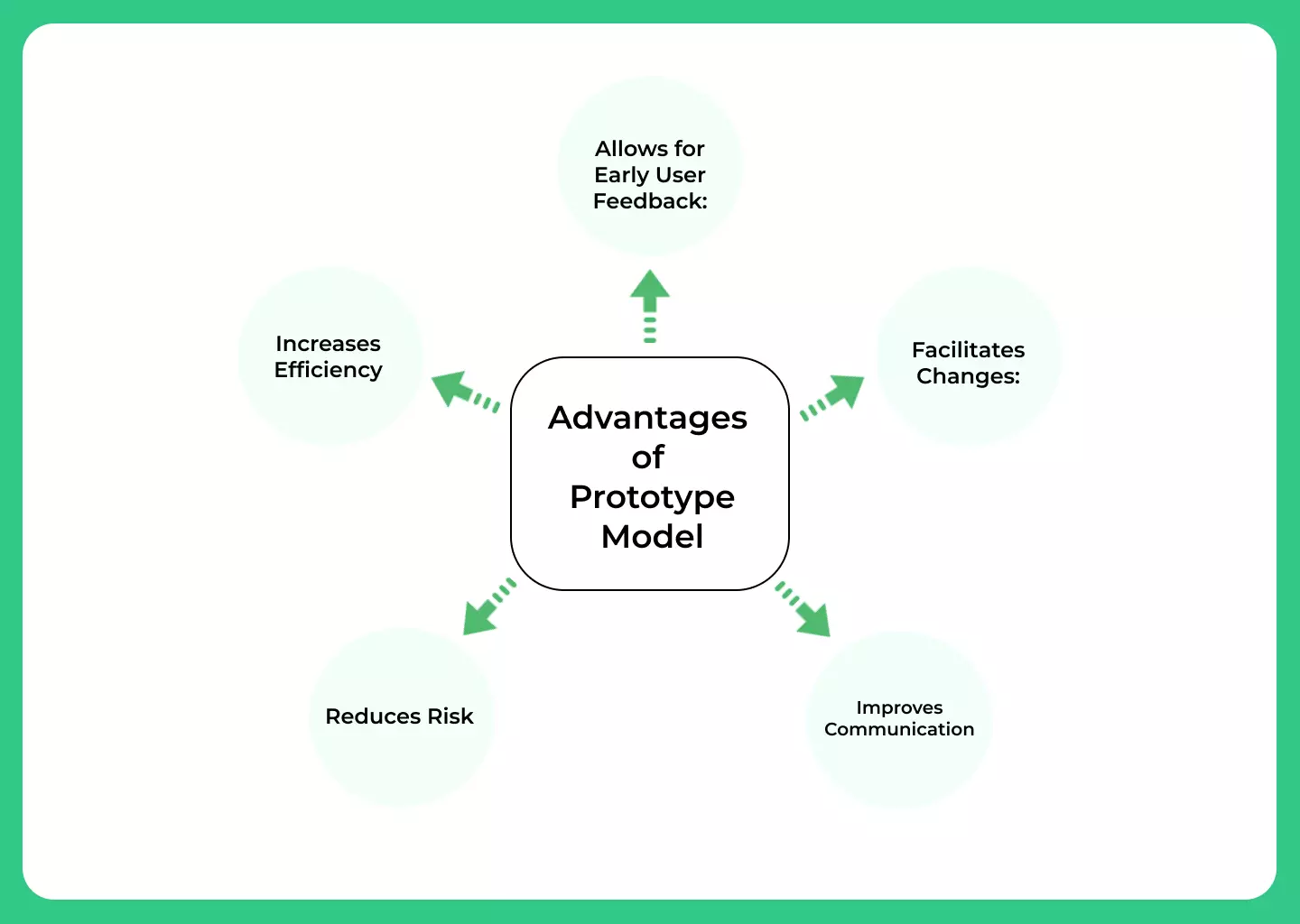0
Notifications Mark All Read
- Login
- Get Prime
Prototype Model in SDLC
What is Prototype Model in SDLC?
The prototype model is a software development life cycle (SDLC) model in which a prototype is built, tested, and then reworked as necessary until an acceptable prototype is finally achieved from which the complete system or product can be developed. The prototype model is an iterative process that begins with the creation of a preliminary version of the software, which is then tested and refined until it meets the requirements of the user.
This model is particularly useful when the requirements of the system are not well-defined or are subject to change. It allows for rapid prototyping and iteration, as the development team can quickly create a working model of the software and get feedback from users. This helps to ensure that the final product meets the needs of the users and is more likely to be successful.

Processes followed in Prototype Model

There are several steps involved in creating a prototype model:
Define the problem:
Clearly define the problem you are trying to solve and the objectives of your prototype model.
Gather data:
Collect and organise the data that you will need to train your model. This may involve scraping websites, collecting data from APIs, or gathering data from other sources.
Clean and preprocess data:
Clean and preprocess the data to remove any errors or inconsistencies. This may involve filling in missing values, converting data into a usable format, or removing outliers.
Split data into training and test sets:
Split the data into a training set and a test set. The training set will be used to train the model, while the test set will be used to evaluate the model’s performance.
Choose a model:
Select the type of model that you will use to solve the problem. There are many different types of models to choose from, including linear regression, logistic regression, and neural networks.
Train the model:
Use the training set to train the model. This may involve adjusting the model’s parameters and fine-tuning its performance.
Evaluate the model:
Use the test set to evaluate the model’s performance. This may involve calculating metrics such as accuracy, precision, and recall.
Iterate and improve:
Based on the model’s performance, you may need to go back and make improvements to the model. This may involve gathering more data, selecting a different model, or adjusting the model’s parameters.
Deploy the model:
Once the model is performing well, you can deploy it in a production environment to solve the problem you defined in step 1.
Advantages of Prototype Model in SDLC:
This model is particularly useful when the requirements of the final product are not well-defined, or when the product is expected to undergo significant changes during the development process.
There are several advantages to using the prototype model in the SDLC:
- It allows the development team to quickly create a working model of the product, which can be tested and evaluated by the users.
- It enables the development team to gather feedback from the users, which can be used to improve the design and functionality of the final product.
- It allows the development team to focus on specific aspects of the product, rather than trying to build the entire product at once.
- It allows for a more flexible and iterative development process, as the prototype can be modified and improved based on the findings from each iteration.
- It can help to reduce the overall cost of the project, as the prototype can be developed and tested with minimal resources.

Disadvantages of Prototype Model in SDLC
There are several disadvantages to using the prototype model in the software development life cycle (SDLC):
- It may not be suitable for large and complex projects, as the prototype may not scale well and may require a significant amount of rework to turn it into the final product.
- It can be time-consuming and costly to create multiple prototypes and revise them based on user feedback.
- The prototype may not accurately represent the final product, leading to misunderstandings and unrealistic expectations from users.
- The prototype may not adequately address all functional and non-functional requirements of the final product.
- There is a risk of the prototype being discarded or significantly revised during the development process, leading to wasted effort and resources.
- It can be difficult to accurately estimate the cost and timeline for a project using the prototype model, as the scope may change significantly during the development process.
Prime Course Trailer
Related Banners
Get PrepInsta Prime & get Access to all 200+ courses offered by PrepInsta in One Subscription
Get over 200+ course One Subscription
Courses like AI/ML, Cloud Computing, Ethical Hacking, C, C++, Java, Python, DSA (All Languages), Competitive Coding (All Languages), TCS, Infosys, Wipro, Amazon, DBMS, SQL and others

 0
0
Login/Signup to comment